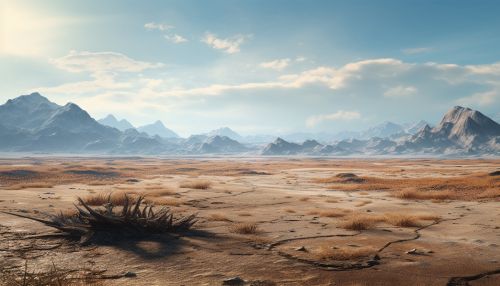The Dynamics of Mass Extinctions and Biodiversity Loss
Introduction
Mass extinctions and biodiversity loss are two interconnected phenomena that have shaped the course of life on Earth. A mass extinction event is a widespread and rapid decrease in the biodiversity on Earth. These events are identified by sharp changes in the diversity and abundance of multicellular organismslearn more. Biodiversity loss, on the other hand, refers to the long-term or permanent reduction in the variety of life on Earth, typically as a result of human activities.


Mass Extinctions
Throughout Earth's history, there have been five major mass extinctions, often referred to as the "Big Five". These include the Ordovician-Silurian extinction events, the Late Devonian extinction, the Permian-Triassic extinction event, the Triassic-Jurassic extinction event, and the Cretaceous-Paleogene extinction eventlearn more. Each of these events resulted in the loss of at least 75% of all species on Earth over a geologically short period of time.
Ordovician-Silurian Extinction Events
The Ordovician-Silurian extinction events occurred approximately 450-440 million years ago and are considered the second most devastating in Earth's history. The primary cause of these events is believed to be a severe ice age that led to substantial climate changelearn more.
Late Devonian Extinction
The Late Devonian extinction occurred around 375-360 million years ago. This extinction event is associated with a prolonged series of extinctions, possibly due to environmental changes associated with the rapid evolution of land plants.
Permian-Triassic Extinction Event
The Permian-Triassic extinction event, also known as the "Great Dying", occurred approximately 252 million years ago and is the most severe extinction event in Earth's history. It is estimated that 96% of all marine species and 70% of terrestrial vertebrate species became extinct.
Triassic-Jurassic Extinction Event
The Triassic-Jurassic extinction event occurred around 201 million years ago and is often associated with massive volcanic eruptions that would have released large amounts of carbon dioxide, causing a greenhouse effect.
Cretaceous-Paleogene Extinction Event
The Cretaceous-Paleogene extinction event occurred approximately 66 million years ago and is most famous for leading to the extinction of non-avian dinosaurs. The primary cause is generally believed to be the impact of a large asteroid or comet.
Biodiversity Loss
Biodiversity loss is a more recent and ongoing phenomenon, largely driven by human activities such as deforestation, habitat destruction, climate change, overexploitation of species, and introduction of invasive specieslearn more. This loss of biodiversity is causing a decline in ecosystem services, which are the benefits that humans derive from ecosystems.
Deforestation and Habitat Destruction
Deforestation and habitat destruction are among the leading causes of biodiversity loss. As forests and other habitats are cleared for agriculture, urban development, logging, and mining, the species that inhabit these areas are often pushed to extinction.
Climate Change
Climate change, driven by human activities such as burning fossil fuels and deforestation, is causing shifts in temperature and precipitation patterns. These changes can disrupt ecosystems and lead to the extinction of species that cannot adapt quickly enough.
Overexploitation of Species
Overexploitation of species, through activities such as overfishing, hunting, and poaching, can lead to population declines and even extinction. This is particularly true for species with slow reproduction rates, which cannot recover quickly from population losses.
Introduction of Invasive Species
The introduction of invasive species, either intentionally or accidentally, can also lead to biodiversity loss. Invasive species can outcompete native species for resources, alter habitats, and spread diseases.
Conclusion
Understanding the dynamics of mass extinctions and biodiversity loss is crucial for predicting and mitigating future biodiversity losses. While mass extinctions are largely natural phenomena, biodiversity loss is largely driven by human activities. Therefore, human actions will play a key role in determining the future of biodiversity on Earth.
